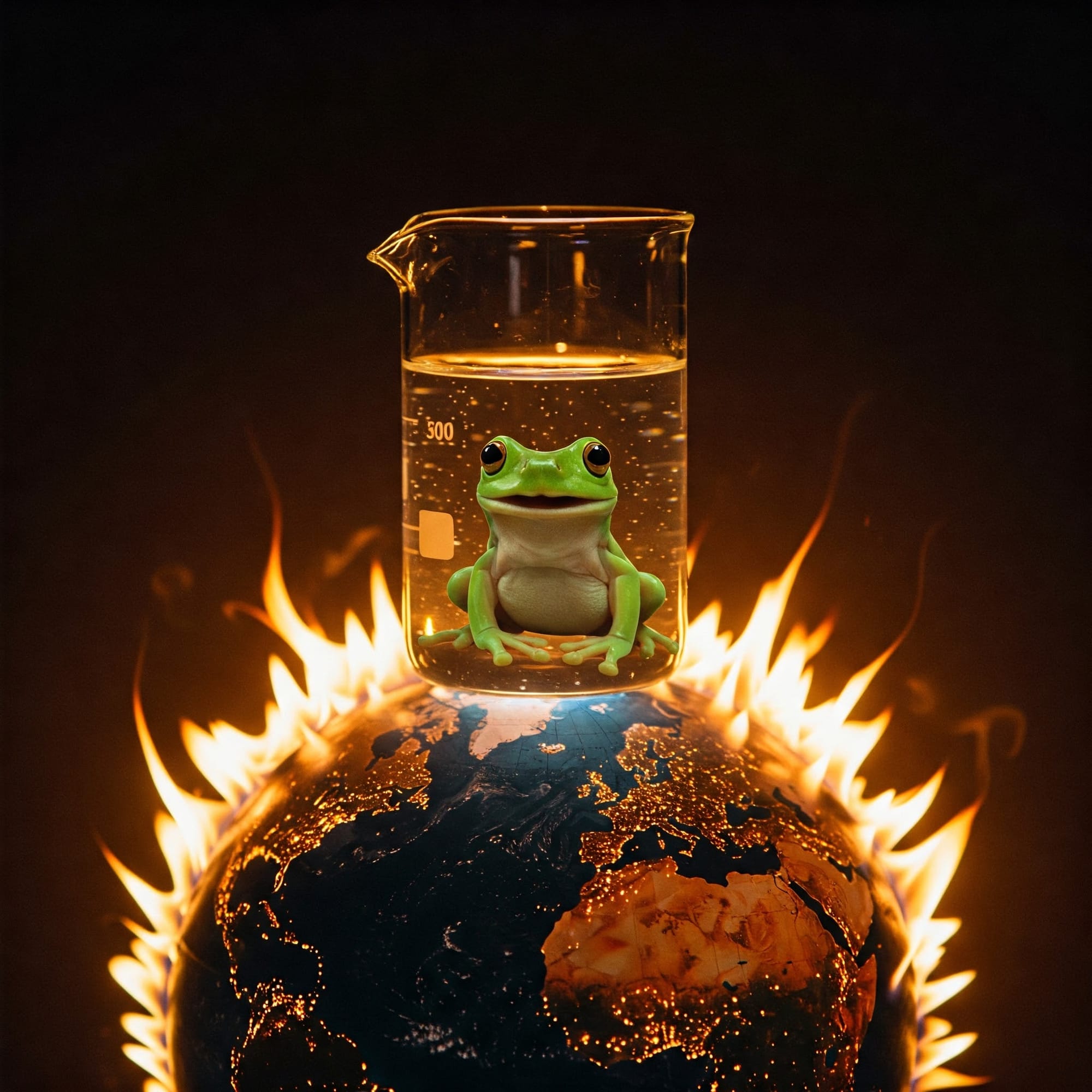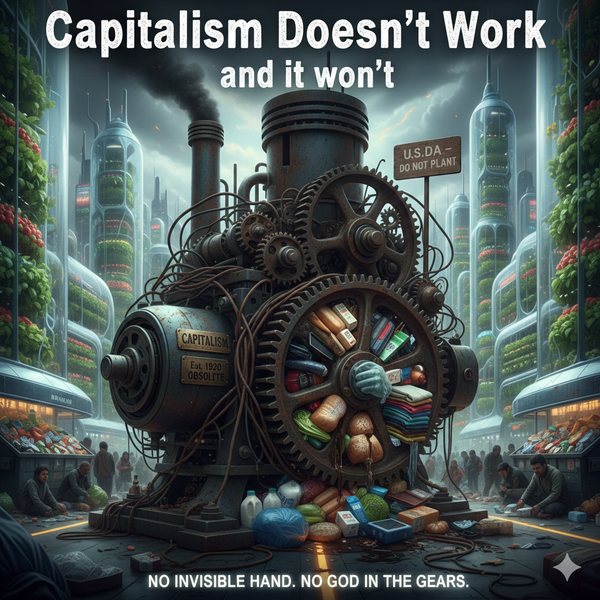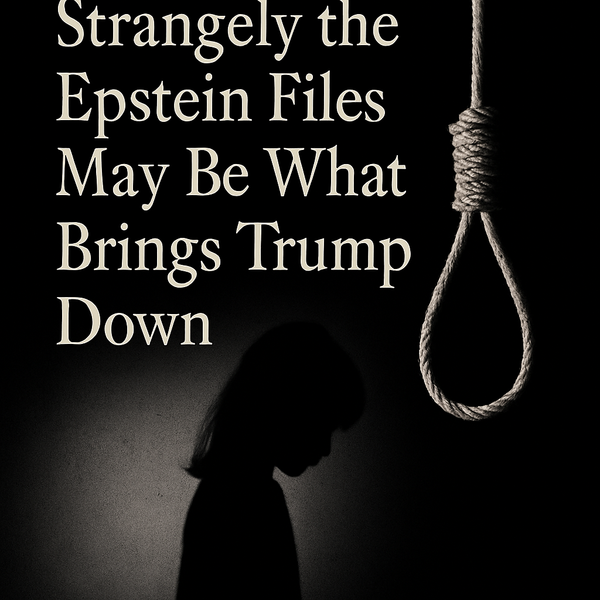Vaccine Hesitancy
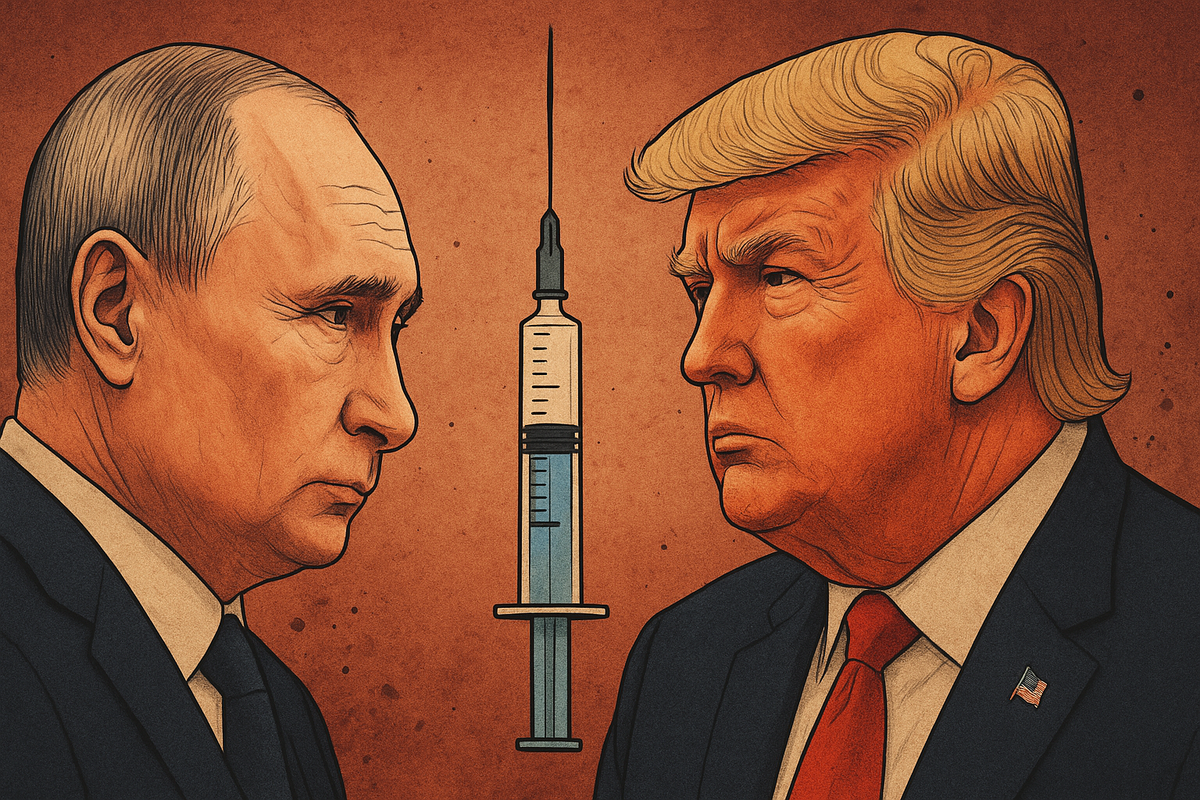
How Russia Turned Vaccines into a Weapon Against Democracy
For the Time-Constrained Reader
Putin didn’t need secret meetings or kompromat. He didn’t need Trump as a puppet or Kennedy as an agent. He needed a lever — something that would split Americans from one another, rewire trust, and make institutions brittle. He found it in the needle. Beginning around 2014, Russian networks turned vaccines into a moral and political explosive. By 2016 they fused that fire with pro-Trump operations. By 2021 the fuse lit whole communities. Vaccine refusal became partisan identity. People died at higher rates along partisan lines. RFK Jr. at HHS turned disinformation into policy. Russia never had to invade. It taught Americans to destroy their own public health and, while they were at it, their trust in democracy.
Part I: The Architecture of Destruction
The Electoral Operation
The Internet Research Agency didn’t operate like a clumsy foreign agitator. It worked like a marketing firm with a malicious brief. It built personas with backstories, photographic IDs stolen from real people, carefully tuned language and cadence, and patiently accrued trust inside the groups it wanted to infect. The accounts joined parenting pages, veterans’ groups, gun forums, and church communities. They wrote like neighbors and argued like relatives. The accounts bought ads. They ran targeted campaigns. At its height the IRA spent more than $1.25 million a month. It reached 126 million Americans on Facebook alone — a number that dwarfs the size of the voting population it affected.
This wasn’t a one-off hack. It was a campaign that blended broadcast-style reach with surgical, demographic precision. It stoked grievances and reinforced existing fractures: race, religion, immigration, and yes — medicine. The IRA’s job wasn’t to convert everyone. It was to find the crack points in American society and widen them. To do that you don’t shout at the crowd; you whisper into the ears of the people who listen most closely to each other, and then you let the network amplify the chattering.
The Vaccine Weapon
The IRA’s vaccine operation began quietly and early. By 2014 its accounts were tweeting about vaccines far more than typical users, hijacking hashtags like #VaccinateUS and #HealthFreedom. They pushed both pro- and anti-vaccine content, not to persuade but to flood the zone. Noise, not conversion, was the goal: amplify both sides until the signal was unreadable.
That strategy was surgical. A tiny fraction of hyperconnected users absorbed most of the disinformation. They skewed toward conservative, rural, and religious communities — the very flashpoints that later defined the partisan divide. Russia didn’t invent distrust, but it learned exactly where to strike.
Part II: The Pandemic Payoff
When COVID Arrived
All of that scaffolding — fake personas, networked audiences, and normalized doubt — was in place when COVID-19 arrived. That was the crucial advantage. For propaganda to work most effectively, you don’t need to invent doubt at the moment of crisis; you need to have sown it earlier so it will blossom when stress arrives. Russia didn’t need to start a new campaign in 2020. It simply amplified, recycled, and redirected existing narratives, making them immediately relevant.
State-backed outlets — News Front, Oriental Review, New Eastern Outlook — flooded anglophone channels with stories that painted Western vaccines as rushed, unsafe, or instruments of geopolitical control. Simultaneously, they lauded Sputnik V as a triumph of Russian ingenuity. The point was not to prove a particular truth; it was to create a multiple-choice chaos in which people choose the narrative that best fits their worldview.
The Death Differential
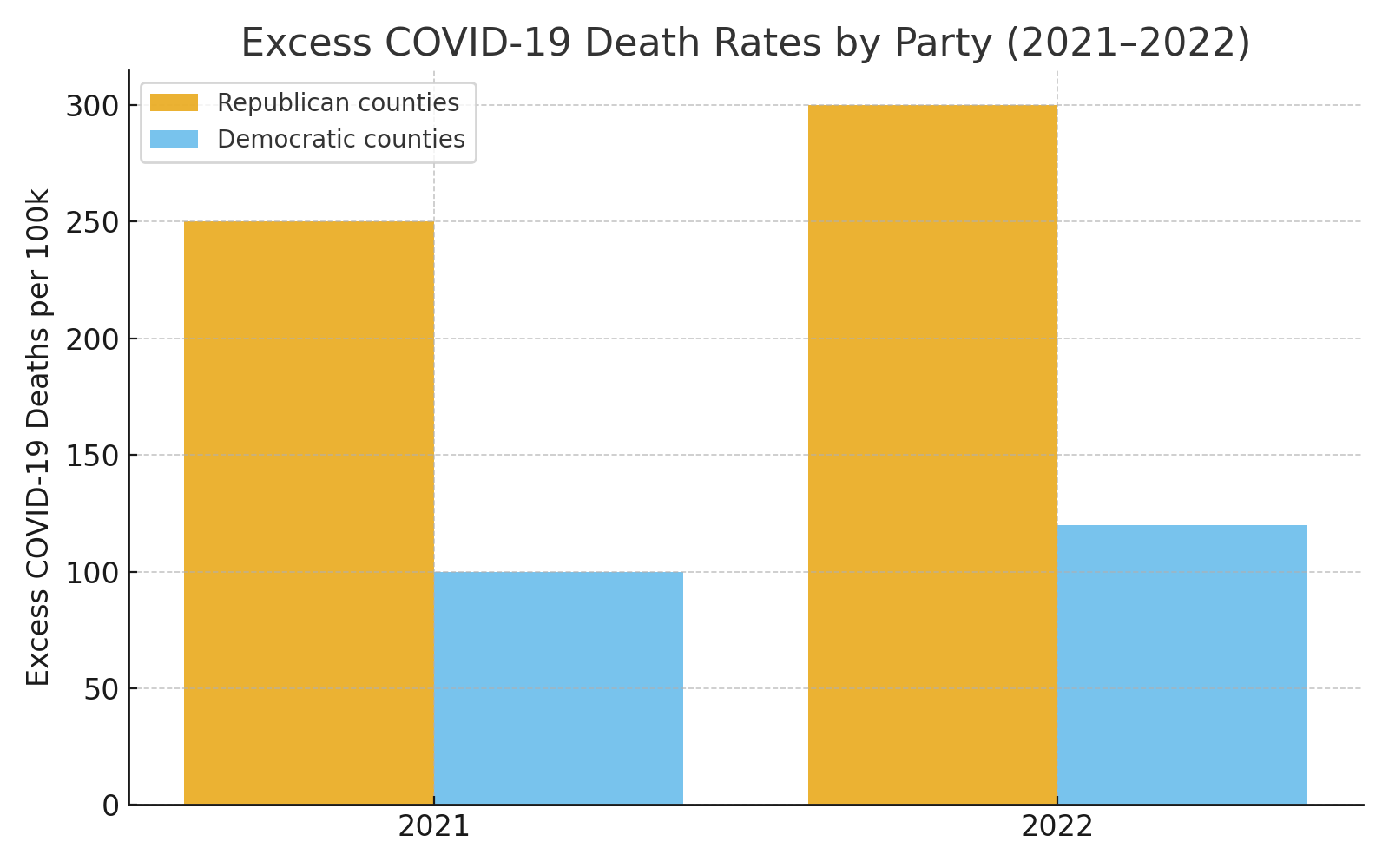
Once vaccines rolled out, the human cost of disinformation was plain. Studies showed a partisan gap in avoidable deaths: Republican-majority counties suffered far higher mortality than Democratic ones, in some analyses nearly triple the rate. These weren’t accidents. They were the predictable outcome of layered distrust: disinformation exposure, low uptake, weak mitigation, then concentrated illness and death. For Russia, the true victory wasn’t the bodies — it was the collapse of trust that produced them.
The Political Transformation
The virus didn’t only kill. It rearranged political identity. By the end of 2021, attitudes toward vaccines correlated more strongly with political party than with any other demographic variable. Only roughly a quarter of Republicans rated childhood vaccinations as “extremely important”— a startling inversion of what public-health policy had assumed about consensual medicine. The politicization of COVID vaccines spilled into attitudes about every other public-health intervention — MMR, flu shots, HPV — contaminating long-established norms about childhood immunization and public safety. Medicine, which once occupied its own technocratic and civic space, had been dragged into the culture war.
Part III: The Kennedy Connection
The Apotheosis
Robert F. Kennedy Jr. didn’t come out of nowhere. For two decades he’d raised suspicions about vaccines and regulators, and his group Children’s Health Defense became a hub of anti-vaccine rhetoric. When those networks collided with Russian seeding and a political culture primed for identity warfare, fringe talking points became mainstream.
Kennedy wasn’t Moscow’s agent. That was the point. His rhetoric dovetailed so neatly with Russian objectives that it hardly mattered. On vaccines he seeded distrust; on foreign policy he echoed Kremlin talking points about NATO, Ukraine, and Western aggression. By the time donors and chaos pushed him from fringe to Cabinet, disinformation had crossed the threshold from narrative to policy.
Part IV: The PrumpTutin Synthesis
No Instructions Required — But the Secrecy Tells You Enough
PrumpTutin isn’t a movie script. There is no neat conspiratorial scene where orders cross a table and are obeyed. There is something more dangerous: a repeated alignment of instincts and interests so complete it renders instruction unnecessary. Trump’s instincts — nationalist posture, anti-globalist rhetoric, disdain for institutions — often mapped perfectly onto Russian strategic aims. When you add to that pattern a habit of private contact with Vladimir Putin, you get not a puppet but a willing collaborator — whether conscious of the consequences or not.
But the private contact is the crucial amplifier. Secrecy matters because it is itself an instrument of strategy.
Trump and Putin met privately more than once: Hamburg 2017, Helsinki 2018, and various sideline chats. Other presidents held private moments with adversaries, but they left records — memcons, interpreter notes, files historians could later review. Trump did the opposite. Interpreter notes were suppressed; meeting details erased. That erasure was not incidental. It was the message: secrecy over transparency, deniability over accountability.
The Feedback Loop

Part V: The Strategic Genius
The Exploit
The strategy’s brilliance was in turning American traits against themselves. Frame vaccines as coercion and “freedom” becomes refusal. Cast public-health agencies as corrupt and the civic bargain shatters. Religious skepticism multiplies when faith leaders repeat it. Social networks magnify outrage until fringe becomes mainstream. The result: medicine recast not as science but as a moral litmus test.
The Death Cult

One of the cruelest outcomes is that death becomes political capital. Families grieving for the dead of preventable illness often double-down rather than doubt. Each loss is reframed by the movement as martyrdom: they died because they were true to principle. This psychological inversion is predictable in high-identity movements: cognitive dissonance leads to redoubled commitment rather than renunciation. That phenomenon made the movement resilient to tragedy and lethal to public health.
Part VI: The Current Crisis
The Measles Return
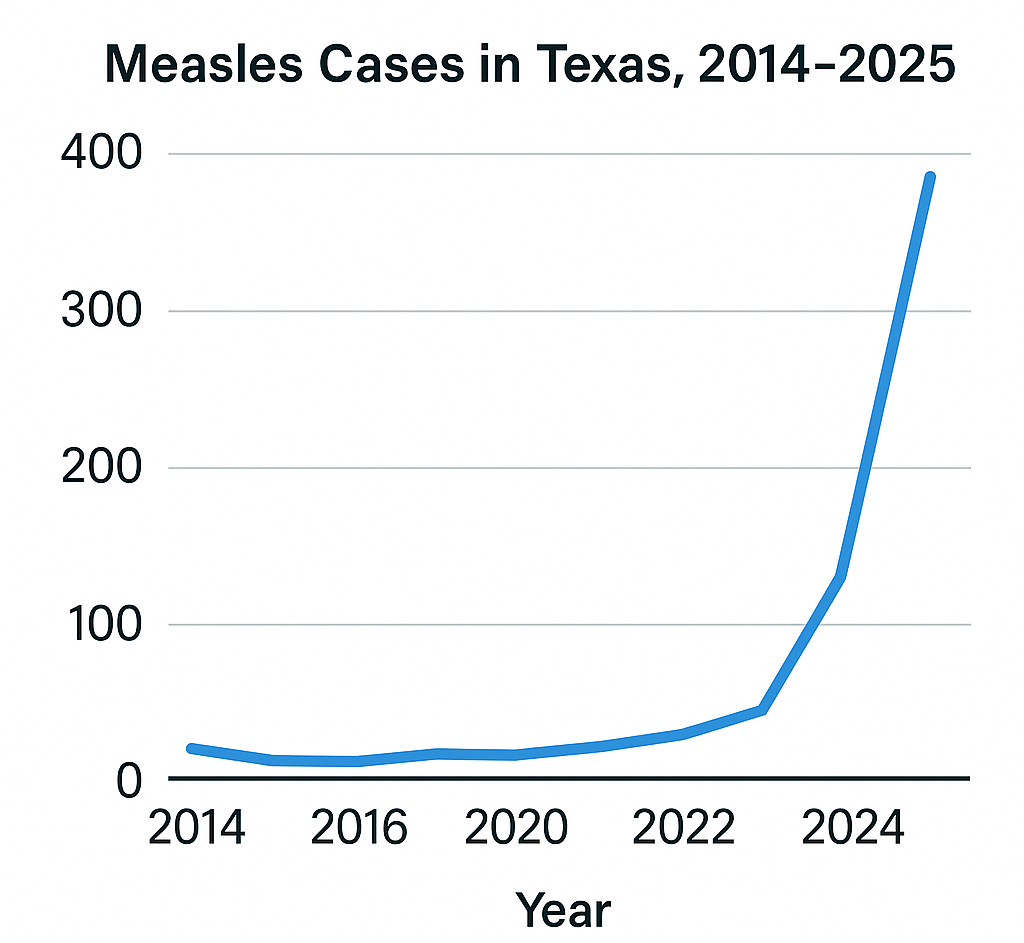
By 2025 measles — a disease nearly eliminated in the U.S.— returned as clusters and community outbreaks. Children caught measles in towns where vaccination had fallen; communities that had once prided themselves on civic adherence were suddenly map points on an epidemiological study. Texas, with several counties of low uptake, reported more than 400 cases in 2025 alone. Schools shuttered. Parents argued in PTA meetings. Social media amplified localized panic into national spectacle.
The Collapse of Trust
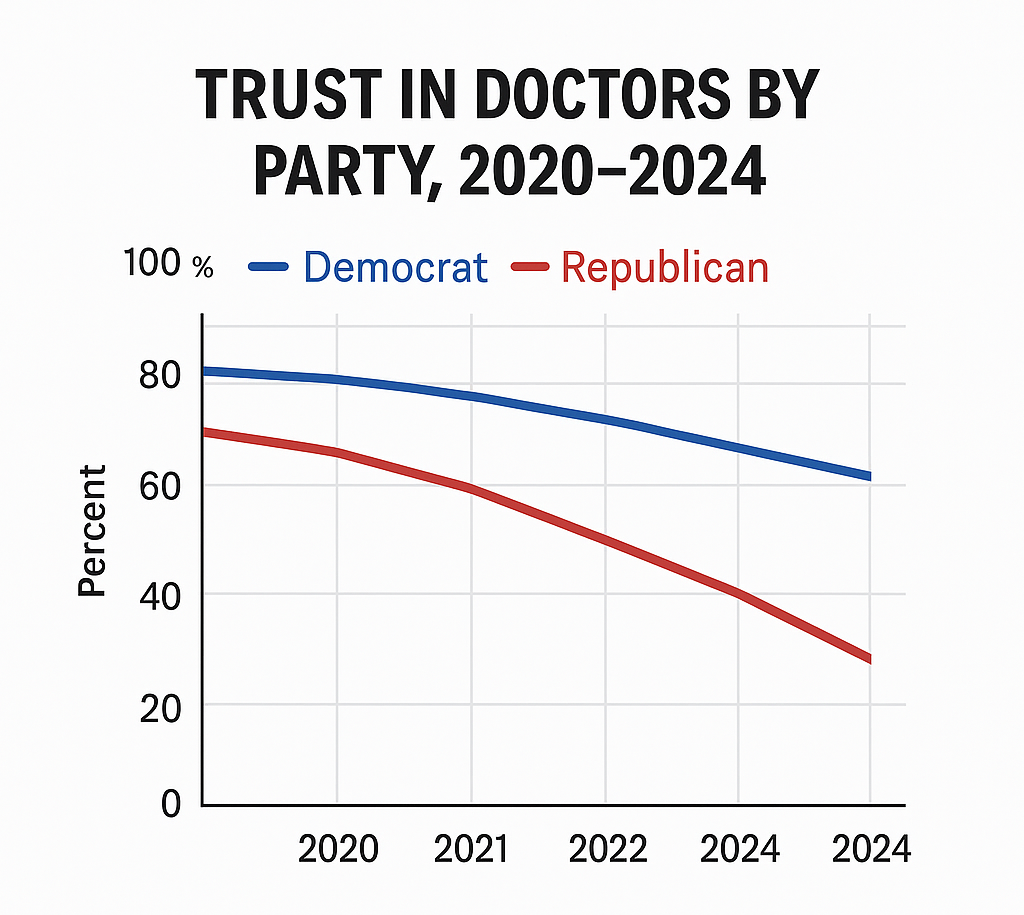
Trust in physicians and public-health institutions tanked. Surveys that once recorded 70%+ confidence in medical professionals plummeted to roughly 40% in aggregate. The partisan divide widened: Republicans were far less likely to trust medical advice, and many younger people said they would leave a doctor who didn’t share their views. The doctor-patient relationship — the most intimate institutional trust Americans have — frayed into a transactional, politicized interaction.
Part VII: The Irreversible Damage
Neural Pathways of Distrust
Two decades of carefully seeded disinformation do more than change opinions; they shape how people process information. Cognitive scientists describe this as the formation of neural pathways: repeated exposure to a theme — “government lies, big pharma profits, doctors untrustworthy” — creates a habit of skepticism. Habits are hard to reverse. Once communities have been raised to mistrust, the pathways reinforce themselves: children learn from parents; neighbors reinforce neighbors; social media algorithms reward outrage; local leaders gain authority by resisting.
The Compound Interest of Doubt

Public-health damage compounds like interest. Each outbreak increases baseline risk for the next generation. Each death hardens narratives. The social capital needed to restore trust is slowly depleted. The longer the crisis persists, the harder it becomes to rebuild a culture where facts and expertise are operable in civic life.
Part VIII: The Global Implications
The Model Exported
America’s unraveling is not only America’s problem. The same toolkit has been repurposed abroad: disinformation tactics, playbooks for exploiting cultural fissures, and a demonstrated model for how to weaponize public health for political ends. China borrowed playbook elements in its information campaigns around Taiwan; Iran uses narratives tailored to regional histories; autocrats and nationalist movements worldwide study the contagion.
The Alliance System Collapses
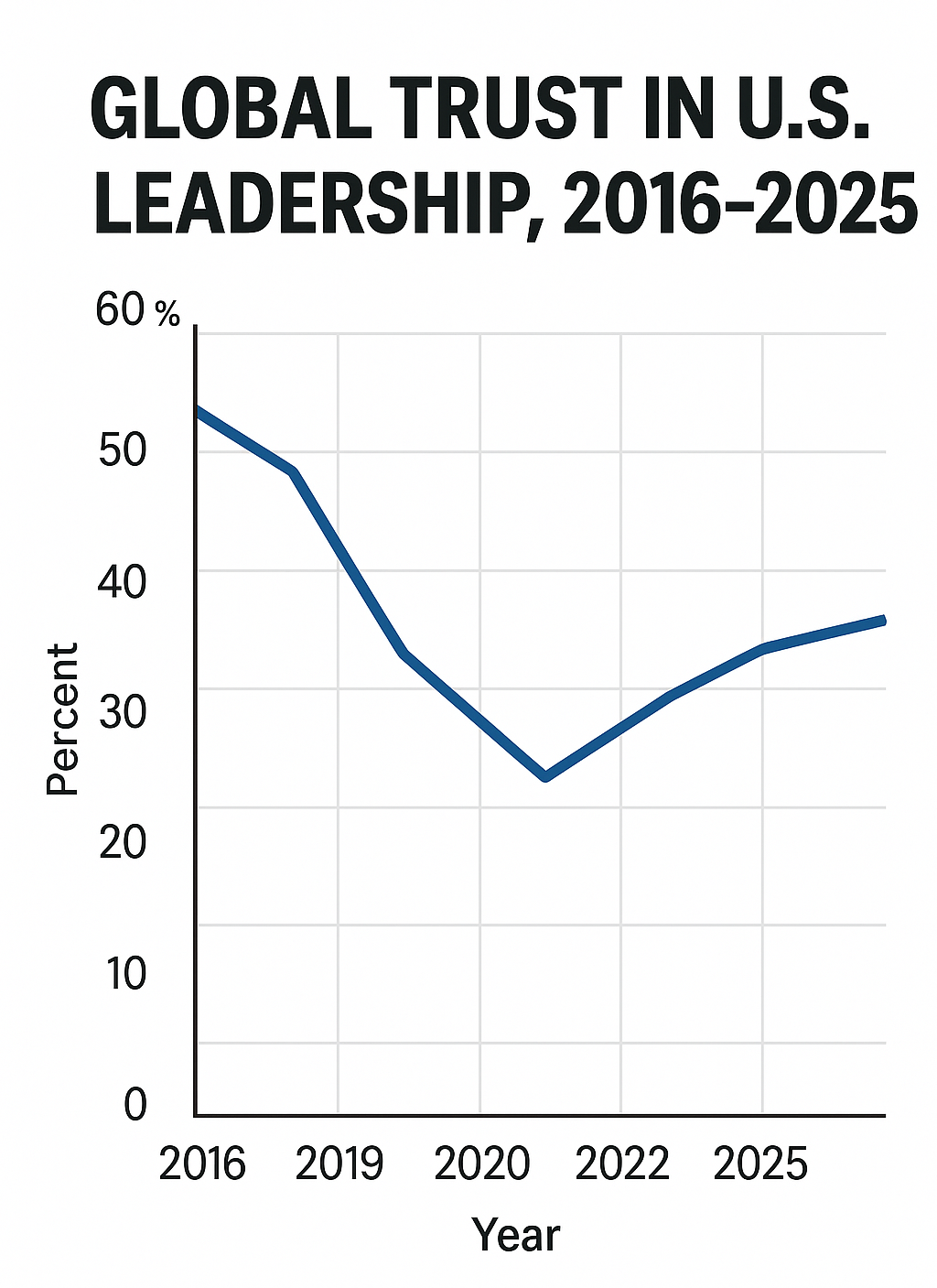
Allies watched the collapse of trust and read its signals as geopolitical weakness. NATO partners questioned U.S. reliability. Pacific democracies hedged toward China. Democratic movements, which once relied on U.S. soft power as a bulwark, found their models less convincing. The broader consequence is a geopolitical environment in which authoritarian actors feel emboldened and global cooperation on transnational problems — pandemics, climate, cyber — is harder to coordinate.
Conclusion: The Endless War
PrumpTutin is no movie plot. It’s a synthesis. Russia created infrastructure; Trump validated it; domestic actors like Kennedy institutionalized the narratives; Americans now run the engine. That’s the danger: you don’t have to be a foreign agent to serve foreign strategy. You only have to be a domestic actor who amplifies the same vectors.
The private meetings matter because they reveal a preference for secrecy over record — and secrecy itself, in the hands of a leader, becomes a tool. The interpreter’s notes taken in Hamburg and the long private session in Helsinki are not just diplomatic curiosities. They are evidence of a pattern: private contact, public obfuscation, and a refusal to allow democratic institutions to perform their oversight function. Reagan, Kennedy, Nixon — they all met privately with adversaries. They preserved memcons and left records that historians could review and citizens could analyze. The absence of such records in the Trump era is a political choice. The erasure is the message.
Russia’s effort was not to produce a single domino that would knock down America. It was to build an ecosystem that would make dominos out of our civic bonds. The needle, repurposed, became a noose: not an instrument of death only, but a device that tightened trust and loosened social cohesion.
The question is not whether the infection can be cured in a single legislative session or a single election. The question is whether the country can rebuild the institutional scaffolding that protects truth, reestablishes professional norms, and detaches civic identity from performative resistance to expertise. That is the long work. It begins with acknowledging what happened, where the seams were pulled, and who benefited from the tearing.
Author's Note
I'm connecting dots here that might not fully connect. The statistics aren't all sourced. The causal links between Russian disinformation and American death rates are inferred, not proven. And vaccine skepticism in America predates Putin's trolls by decades.
What I know: Russia ran influence operations. Americans died from vaccine refusal at different rates by party. Trust in medicine collapsed.
What I'm arguing: These things are related.
What I can't prove: Exactly how much Russia caused versus exploited what was already broken.
Take this as analysis, not gospel.
